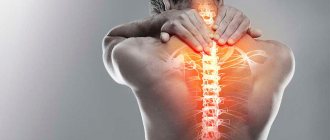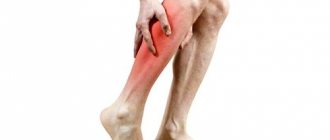Panic attacks in children are a relatively rare phenomenon, occurring in no more than 3% of patients in the general population. The disease is severe, the child suffers from unmotivated attacks of fear and internal anxiety. This creates interference in learning and is met with misunderstanding from peers, which can result in bullying. The symptoms frighten the child and parents and force them to actively look for ways to solve the problem. The search does not always lead people to the right place, i.e. the psychiatrist's office. Parents often turn to all sorts of charlatans: “traditional healers,” psychics, priests, etc., even exorcists. Needless to say, such therapy does not benefit the baby, and the lack of results only aggravates the stress.
To combat the manifestations of panic syndrome successfully, you need to stop taking it for something supernatural. Although this is a rare, but well-studied medical problem.
What you need to know.
- Panic attacks occur mainly in schoolchildren after 7-10 years of age.
- Children who have entered adolescence are automatically at risk, since their hormonal levels change significantly.
- The occurrence of the disease is impossible to predict and difficult to prevent. All that parents can do is to prevent the baby from overtiring and, if possible, reduce the stress on his psyche.
What is a panic attack?
A panic attack is characterized by panic attacks that occur at least once a week.
A panic attack is a short (about 20 minutes) episode of intense fear (See Intrusive Thoughts and Fears) that is usually accompanied by physical symptoms such as rapid breathing, rapid heartbeat, sweating, chest pain and nausea. Panic disorder is diagnosed when children have panic attacks often enough to cause significant impairment.
Panic disorder is usually treated with a combination of medications and behavioral therapy with a psychologist (See Cognitive therapy in the treatment of panic disorder).
The problem is much more common among teenagers than younger children. Sometimes children experience anxiety (see Child and Adolescent Psychologist) when they are young and then develop panic disorder when they reach puberty.
Panic attacks can occur with any anxiety disorder (see Anxiety Disorders). For example, children with separation anxiety may have a panic attack when a parent leaves. Children who fear being trapped in places where there is no easy escape (agoraphobia) may have a panic attack when sitting in the middle of a row in a crowded classroom. Many children with panic disorder also have agoraphobia.
Physical disorders such as asthma can also cause panic attacks, and panic attacks can cause asthma attacks.
Panic disorder (PA) in children and adolescents is a chronic disease that is accompanied by psychosocial difficulties in both adolescence and adulthood (see Psychosomatics).
This article reviews the prevalence, clinical characteristics, risk factors, comorbid conditions, differential diagnosis, and treatment of panic attacks. Although PA is thought to be rare in children and adolescents, the prevalence of PA in community samples ranges from 0.5% to 5.0, and in child mental health clinics from 0.2% to 10%.
Panic attacks are reported to be equally common among men and women. Clinical studies have shown that the majority of pediatric patients with PsA consulted in clinics are older adolescents, women, and middle-class people.
Up to 90% of children and adolescents with panic attacks have another anxiety disorder (separation anxiety disorder, social phobia, or agoraphobia (see Agoraphobia and Panic Attacks)) or mood disorder (bipolar disorder). Patients with panic attacks may be misdiagnosed or have neurological, cardiovascular, pulmonary or gastrointestinal diseases. Comprehensive treatment is recommended, and the course and treatment of PA in children and adolescents should be further evaluated through well-designed studies.
Reasons for appearance
There are three types of causes of illness: biological, psychological and genetic. The first include diseases of the internal organs, the symptom of which may be panic syndrome. Most often, this is a malfunction of the adrenal glands, leading to uncontrolled excess releases of catecholamines and general hormonal imbalance. A biological predisposition to a disease is possible, the activation of which requires an external factor: stress, psychological trauma, stressful life circumstances.
The psychological causes of panic attacks in teenagers are all kinds of personality disorders, excessive stress, pressure from parents and teachers, bullying from peers, problems of the transition period, etc. Morbidity rates are rising among children from disadvantaged families. Psychological reasons include the following factors:
- violence in family;
- alcoholism, drug addiction, reduced social responsibility of parents;
- authoritarian education.
Genetic causes are bad heredity. The risk of morbidity increases by an average of 17% in the presence of first-degree relatives who have previously experienced attacks. However, the genetic factor may or may not appear, so the causes of morbidity are best considered in their entirety.
The psychological factor often acts as a trigger, activating other predispositions of the body. Without it, the disease may never arise, even if all other prerequisites for its development exist.
Symptoms and signs of a panic attack in children and teenagers
Symptoms of a panic attack include a sudden surge of intense fear accompanied by physical symptoms (eg, palpitations, sweating, trembling, shortness of breath or choking, chest pain, nausea, dizziness). Compared to those in adults, panic attacks in children and adolescents are often more dramatic (eg, screaming, crying, and hyperventilating). This can be extremely frightening for parents.
Panic attacks usually develop spontaneously, but over time, children begin to attribute them to certain situations and conditions. Affected children then try to avoid those situations that may lead to agoraphobia. Avoidance behavior is considered agoraphobic if it greatly interferes with normal functioning, such as going to school, going to the mall, or performing other typical activities.
During a panic attack, children experience intense anxiety, which causes physical symptoms:
- The heart is beating fast.
- Children may sweat profusely and choke
- They may have chest pain or dizziness, nausea or numbness
- Children may feel like they are dying or going crazy
- Things may seem unreal to them
- Symptoms may be more dramatic (including screaming, crying, or hyperventilation) than in adults
- Children may worry about other seizures
- Panic attacks and related worries interfere with relationships and schoolwork
In panic disorder, panic attacks usually occur on their own, without any specific trigger. But over time, children begin to avoid situations that they associate with seizures. This avoidance can lead to agoraphobia, which makes children reluctant to go to school, visit the mall, or engage in other typical activities.
Panic disorder often waxes and wanes for no apparent reason. Symptoms may go away on their own and then recur years later. But with treatment, most children with panic disorder improve.
Sometimes, when panic disorder is not treated, teenagers drop out of school, withdraw from society and become recluses and suicides.
What to do during an attack?
Symptoms most often appear spontaneously, regardless of time and place. The child’s behavior changes dramatically, some vegetative signs of the attack are visible from the outside (severe pallor of the face, sweating, trembling). Children tend to seek help from others, albeit wordlessly.
A teenager can be taught the following self-help methods:
- move the object of attention - reading signs or advertisements, studying patterns on the asphalt, looking at passers-by;
- various grounding techniques (“grounding”), which the doctor will select together with the patient;
- maximum relaxation - you can sit or lie down in any safe place, regardless of others;
- start reading your favorite poem out loud or sing an excerpt from a song, try to remember the phone numbers of your loved ones;
- slow diaphragmatic breathing - the psychiatrist will clearly demonstrate the techniques and teach the patient;
- After an attack, seek help from adults, not necessarily parents.
The same recommendations apply if the attack occurs in another person. The main thing is to provide maximum comfort and reassure the victim. A panic attack is not fatal, the symptoms are temporary!
Diagnosis of panic attacks in teenagers
Panic disorder is diagnosed based on a history of recurrent panic attacks, usually after a physical examination to rule out physical causes of physical symptoms. Many children undergo significant diagnostic testing before panic disorder is suspected. The presence of other disorders, especially asthma, can also complicate the diagnosis. Careful screening for other disorders (eg, obsessive-compulsive disorder (See Coping with OCD), social anxiety disorder) is necessary because any of these disorders may be the underlying problem causing panic attacks as a symptom.
In adults, important diagnostic criteria for panic disorder include concerns about future attacks, consequences of attacks, and changes in behavior. However, children and young adolescents typically lack the understanding and forethought necessary to develop these functions, except that they may change behavior to avoid situations that they believe are associated with a panic attack.
Panic disorder
Panic attacks are a symptom of what is called panic disorder.
Panic disorder (episodic paroxysmal anxiety) is a mental disorder that is characterized by the spontaneous occurrence of panic attacks from several manifestations per year to several times a day and restless anticipation of their occurrence.
“Panic disorder” is recognized worldwide as an independent disease. It is included in the International Classification of Diseases, 10th revision (ICD-10)
Some Russian doctors use outdated terms that are not in the ICD, but they emphasize the type of disorder of the autonomic nervous system depending on the leading symptom:
- "vegetative crisis";
- “sympathoadrenal crisis”;
- "cardioneurosis";
- “VVD (vegetative-vascular dystonia) with a crisis course”;
- “NCD” (neurocirculatory dystonia)
Fears in teenagers: what are they, and how to help cope with them?
Fears in teenagers: what they are and how to help
deal with them?
Adolescence is a transitional period when relationships, interests, hobbies change, and a worldview develops. The self-esteem of the individual, as well as interpersonal relationships in the group, undergoes transformation. It is not surprising that such changes are accompanied by increased anxiety, worries and fears. Among the reasons leading to the formation of fears in adolescents aged 11 to 16 years are:
Biological reasons that are associated with the peculiarity of the nervous system of older schoolchildren, increased emotional sensitivity.
Social reasons, including the fear of not being accepted in the group, the great age of the parents (fear of their death), etc. Psycho-emotional reasons, due to a large number of prohibitions, conflictual relationships with parents and within the peer group, psychological trauma, etc.
Hidden forms of aggression contribute to the emergence of fears; among these forms one can note irritation, guilt, and suspicion. Teenage fear differs from the phobias that overwhelm children in preschool and primary school age. A distinctive feature is an increase in the number of social fears and a decrease in phobias.
Natural phobias: death, darkness, illness
1. Deaths. All psychologists agree that the leading fear that arises in adolescents is the fear of the death of their parents. Moreover, already at primary school age, fears for the life of the mother and father begin to prevail over the fear of one’s own death. It is very difficult for parents to find out about the hidden feelings tormented by a teenager. The fact is that at this age they do not try to get rid of fears, but try to hide them. And attempts to independently overcome the fear of one’s own death often end in failure. Children unnecessarily risk their own lives trying to control this feeling.
2. Diseases. Often fearing the death of both themselves and a loved one, a teenager begins to experience the fear of illness. If this condition takes on the character of a phobia, then it is necessary to seek help from a psychologist, as it can threaten real health problems. Your teen may begin to: experience panic attacks; suffer from rapid heartbeat; faint.
3. Darkness. Natural fears that often arise in adolescence include the fear of the dark. Its reasons lie somewhat deeper than in childhood. These could be: conflicts with parents and peers; unrequited love; passion for computer games or horror films. All these factors provoke stress and the fear of being in a dark room.
4. Night terrors can also plague a teenager. They predominate mainly in early adolescence, that is, before the child reaches 12-13 years of age. Girls are more susceptible to them than boys. These fears find their expression in episodic attacks of horror and screaming when the teenager is overly excited.
Social fears include those that relate to public life and everything connected with it. Often teenagers experience anxiety and fear of public speaking, in particular, answering at the board. In addition to the fact that many glances will be directed at the child, he will also have to demonstrate his knowledge. Fears arise not without reason; many things affect them: a sense of prestige; desire for authority (both in front of classmates and in front of parents); effort spent on preparation. As a result, the fear of answering poorly leads to poor performance. Moreover, tests and homework are completed “excellently,” but the answers given at the board are often only “satisfactory.”
Teenage social anxiety is a fear of communication. In no case should it be ignored, because contact with peers in adolescence is the dominant activity. A shy child finds himself in a very disadvantageous situation, which affects his development. There may be several reasons for this fear: negative experience; diffidence; dissatisfaction with appearance; dissatisfaction with material wealth in the family. But it happens that this fear has no rational basis and is simply a phobia coming from childhood. How to overcome teenage anxiety. In order to overcome the fears that haunt a teenager, you need to recognize them. This will not be difficult for attentive parents and teachers to do.
The following recommendations will help you get rid of social fears::
Eye to eye contact. It is important to teach your child not to be afraid to exchange views. This can be achieved by encouraging conversation with the following phrases: “Look at me,” “Look into my eyes,” “I want to see your eyes.” This will strengthen your teen's ability to make eye contact, which will make communicating with other people easier.
It is necessary to explain to the teenager how to start and end a conversation. It is important to talk through and act out various social situations. Perhaps this will be presented in a humorous way, in the form of a game.
It is necessary to create conditions for establishing friendships between children.
School fears can be overcome, and the following exercises can help with this:
Visualization of fear. This exercise works no worse in teenagers than in childhood. Imagination, realized in the form of drawing the object of one’s fear on paper, makes it possible to overcome fear. Completion of the exercise is the elimination of the drawing by burning, crumpling the sheet, cutting, etc.
Implosion. It is based on the fact that fear is artificially intensified, but at the same time the teenager is provided with additional protection. For example, if a child is afraid of publicly demonstrating his knowledge, let him answer at the board, but in the presence of his parents. Talk about your worries. At the same time, it is important to get to the essence of fear, to find out the most seemingly insignificant details. Perhaps, after talking with an adult, the fear will turn into a joke.
ADVIСE:
Switching to another activity. You need to try to distract the teenager from his fear, to occupy him with something new, exciting and interesting. Has the process of falling asleep become torture? Find out how to get rid of the fear of not falling asleep.
Fears in a teenager are a phenomenon that you can and should be able to cope with. The following advice from psychologists can help parents and their children overcome fears:
- reconsidering values and priorities;
- observation of surrounding people;
- relaxation, both mental and physical; thorough study of the object of fear;
- adequate assessment of one's own personality;
- recognition of the rights of a teenager, in particular: to personal opinion, to a position in the family, to private life.
The problems of adolescence are multifaceted, including fears. It is important for parents to be able to recognize the anxieties and fears that plague their grown children. This will make it possible to jointly overcome existing fears, and personalities to develop harmoniously.
Teacher - psychologist Osipova G.I.










